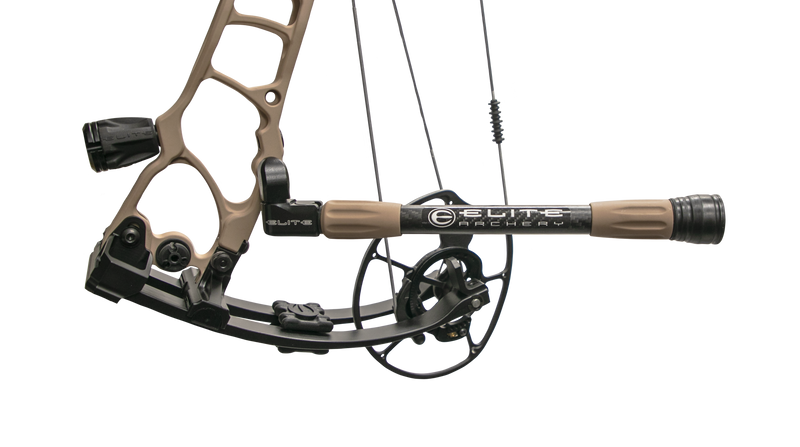Bow Stabilizer : Your Ultimate Guide to Improved Archery Precision
Bow Stabilizer : Your Ultimate Guide to Improved Archery Precision
Blog Article
Maximize Your Archery Accuracy With These Bow Stabilizer Strategies
In the world of archery, achieving optimal accuracy is a pursuit that requires thorough focus to information and technique. One vital element that can significantly impact your efficiency is the appropriate application of bow stabilizers. These often-overlooked devices hold the potential to boost your capturing effectiveness to new elevations, yet only if used appropriately. By discovering the nuanced approaches of picking, mounting, and fine-tuning bow stabilizers, archers can open a realm of accuracy that might have previously avoided them. Whether you are an experienced archer seeking to improve your skills or a newcomer excited to improve your accuracy, mastering these bow stabilizer methods could be the secret to striking your mark with unmatched uniformity.
Advantages of Utilizing Bow Stabilizers
Utilizing bow stabilizers can substantially boost an archer's precision and total performance by decreasing bow torque and resonance. Bow torque, triggered by the unequal circulation of weight in the bow, can result in inconsistencies in shot placement. By connecting a bow stabilizer, the weight is redistributed, decreasing the impacts of torque and helping the archer attain a more constant shot. In addition, bow stabilizers dampen resonance, which not just boosts the convenience of capturing yet additionally stops the bow from jumping upon release, therefore assisting in maintaining appropriate aim.
In addition, bow stabilizers can help in holding the bow consistent, especially during windy conditions or when firing from longer distances. The included weight at the front of the bow provides stability and balance, permitting the archer to concentrate on intending without the distraction of bow motion. On the whole, the benefits of utilizing bow stabilizers expand beyond just accuracy, enhancing the archer's experience and performance in numerous shooting scenarios.
Choosing the Right Bow Stabilizer
Choosing the suitable bow stabilizer is essential for enhancing your archery equipment and improving shooting efficiency. Heavier stabilizers can help reduce bow torque and absorb more vibration, leading to a steadier goal.

Finally, think about the layout of the stabilizer. Some stabilizers feature flexible weights or dampeners that enable you to customize the equilibrium and feeling of your bow. Inevitably, picking the right bow stabilizer involves discovering an equilibrium between weight, length, material, and design to enhance your shooting precision and overall efficiency.
Appropriate Installation Techniques
To ensure ideal efficiency and security in archery, understanding proper installation methods for your bow stabilizer Related Site is essential. The first step in mounting a bow stabilizer is to determine the correct placement on your bow.
Following, safely attach the stabilizer to the bow making use of the suitable installing hardware. Some stabilizers come with flexible weights that can be included or eliminated to tweak the balance of your bow.

Changing Stabilizer Weight and Length
After making certain the appropriate installment of your bow stabilizer, the following step entails changing the weight and size to maximize its efficiency in boosting archery accuracy. The weight of the stabilizer plays a crucial function in reducing bow movement throughout the shot cycle.
When it concerns stabilizer length, finding the ideal balance is key. A longer stabilizer can give higher security by raising the distance in between the bow and the weight at the end of the stabilizer. This included distance improves the supporting effect, especially in gusty problems or when firing at longer distances. click this link On the other hand, a shorter stabilizer supplies more maneuverability and may be chosen by archers who value agility and quick activities during capturing.
Advanced Stabilizer Tuning Tips
Attaining optimum bow security and accuracy in archery requires a nuanced strategy to advanced stabilizer tuning. Advanced stabilizer tuning includes fine-tuning different parts to boost the bow's balance, lower vibration, and improve overall accuracy.
One more important facet of advanced stabilizer adjusting is enhancing the damping buildings of the stabilizer system. This can be attained by including additional wetting accessories such as rubber dampeners or harmonic stabilizers to better minimize vibration and click this sound. Furthermore, exploring various products for the stabilizer building, such as carbon fiber or light weight aluminum, can additionally influence the bow's performance by altering its weight circulation and tightness. By meticulously tweak these innovative stabilizer elements, archers can optimize their accuracy and uniformity on the range or in competition.
Final Thought
In final thought, optimizing archery precision can be achieved with the correct choice, installment, and change of bow stabilizers. Generally, including bow stabilizers into archery practice can lead to improved performance and enhanced precision.
Utilizing bow stabilizers can significantly improve an archer's accuracy and total performance by minimizing bow torque and resonance. Longer stabilizers offer higher security and equilibrium, specifically for long-distance shooting, while shorter stabilizers provide more flexibility and are easier to navigate in limited areas (bow stabilizer). Carbon fiber stabilizers are durable and light-weight, while aluminum stabilizers are robust and provide excellent resonance moistening
A longer stabilizer can provide greater security by raising the range between the bow and the weight at the end of the stabilizer.One more vital element of advanced stabilizer adjusting is enhancing the damping homes of the stabilizer system.
Report this page